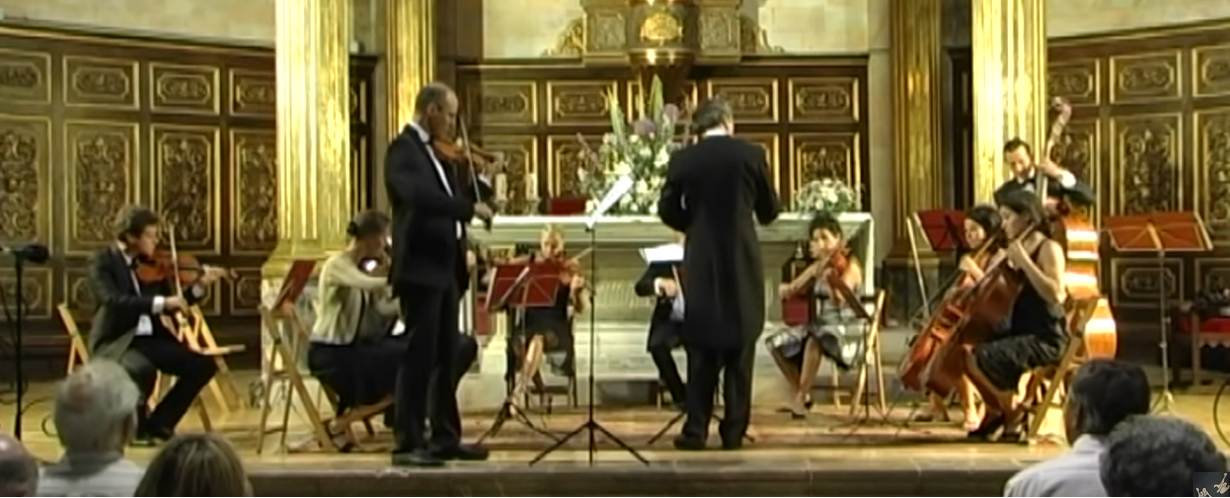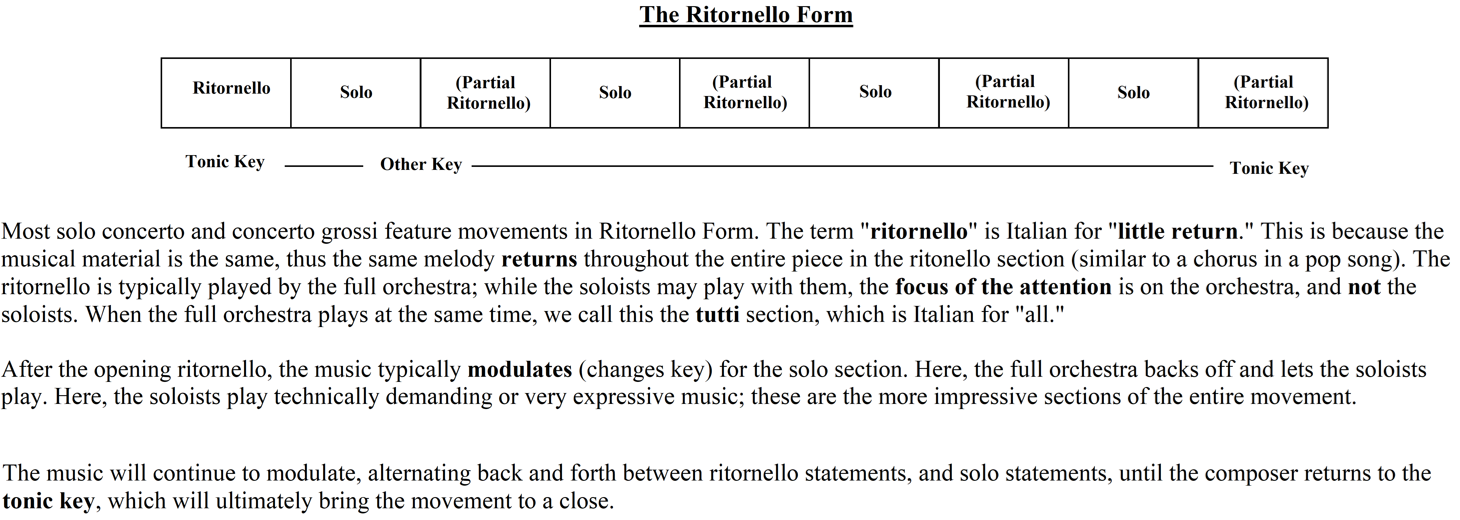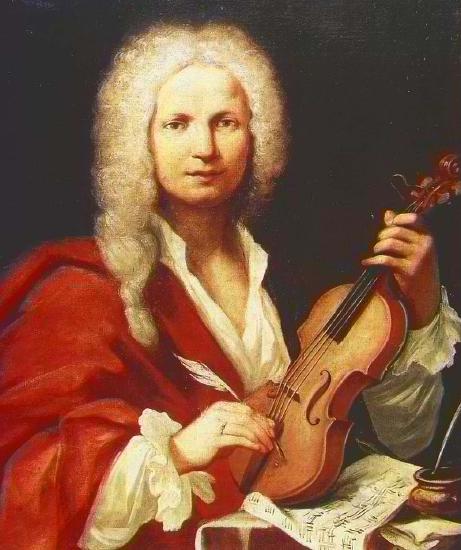8.2: Concertos in the Baroque Period
- Page ID
- 165655
The Solo Concerto.

André Rebacz performs a solo concerto by Anrtonio Vivaldi with the French Chamber Orchestra (Screenshot from YouTube)
In the Baroque Period, the solo concerto consisted of a single soloist and a very small orchestra -- by today's standards, the orchestra would be considered a "chamber orchestra" because there are usually no more than 15 string players within. As we should expect in the Baroque Period, there is a harpsichordist in addition to the string family, and sometimes we see a lute player (recall that the lute is similar to a guitar). As you can see in the picture above, there are only a handful of string performers in the background. The soloist will stand (or sit) in the very front of the orchestra and will perform typically very challenging and demanding music. The soloist is often a virtuoso - or a performer who is incredibly skilled (the "rock star," so to speak). Early students and amateurs are usually not able to perform these types of pieces because of how difficult they are. After reading through this description of the ritornello form below and listening to Vivaldi's "Four Seasons," watch the video presentation for this chapter, and you'll have more of an understanding as to how the music is organized.
Ritornello Form.

Vivaldi's "Spring Concerto" from The Four Seasons
 Antonio Vivaldi (1678-1741) was a well-known violinist, composer, performer, and teacher. He was ordained as a Roman Catholic priest, and was known as the "Red Priest" due to his notorious red hair. He spent a significant portion of his life serving as the music director at an orphanage for girls. During his career, he composed almost 350 solo concertos, 2/3 of which were solo violin. His most famous output was a set of 4 violin concertos titled The Four Seasons, each of which is based off of a poem that he wrote himself that describes each season.
Antonio Vivaldi (1678-1741) was a well-known violinist, composer, performer, and teacher. He was ordained as a Roman Catholic priest, and was known as the "Red Priest" due to his notorious red hair. He spent a significant portion of his life serving as the music director at an orphanage for girls. During his career, he composed almost 350 solo concertos, 2/3 of which were solo violin. His most famous output was a set of 4 violin concertos titled The Four Seasons, each of which is based off of a poem that he wrote himself that describes each season.
Recall that when composers write instrumental music about something non-musical like a story, a poem, a geographic location---literally any non-musical element, we call this program music.
We'll look at his most famous work, the "Spring" concerto. The poetry that accompanies this movement is as follows:
"Festive spring has arrived.
The birds salute it with their happy song.
And the brooks, caressed by gentle breezes
flow with a sweet murmer.
The sky is covered with a black mantle,
and thunder and lightning announce a storm.
When they are silent, the birds
return to sing their lovely song."
(above): portrait of Vivaldi by Unidentified painter, Public Domain.
Now watch a video of this performance. Pay attention to the ritornello section (the main melody played by the orchestra). This continues to come back throughout the movement, as it is constantly interrupted by the soloist. If you follow along with the diagram above, you'll be able to hear the "dialogue" between the soloist and the orchestra.
As you listen to the music, pay attention to the time stamps below; you'll actually hear these different sections of the poem within the music. The "joyful spring" is depicted in the music's major mode and upbeat tempo; the bird songs can be heard in the two violins playing in dialogue with one another; the brooks and breezes can be heard in the soft and fast passagework of the string, and the thunderstorm and be heard in the rumbling of the cellos. It's very creative, and very unique for the time!
Remember that this is simply the first movement of the "Spring" concerto, which consists of 3 movements, each with more poetry! He wrote 3 more full concertos, each based off another set of poetry that depicted another season!

